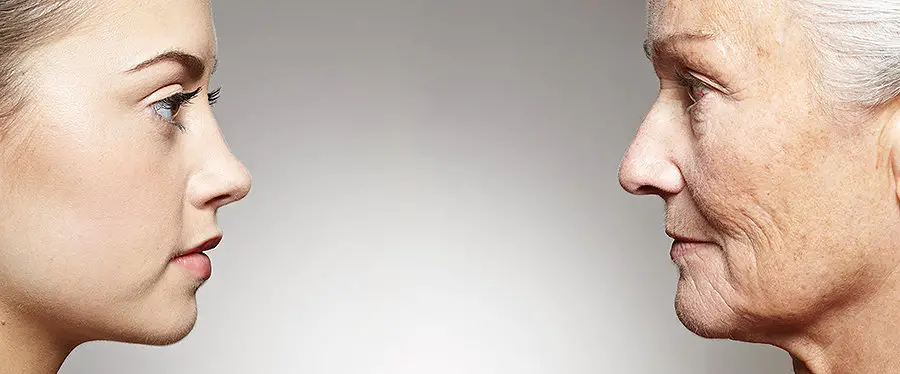
Puberty creates some of the fastest skeletal growth we experience as humans. This makes it the best time to make sure your facial aesthetics develop to the best of their ability.
Our facial bones usually stop growing when we are 18-21 years old. However, that does not mean they will not change after that. Our eye sockets, nose, jaw, ears, etc. will continue to remodel throughout life.
Here is everything you need to know about facial bone growth and how you can enhance your facial bone structure.
How Your Facial Bones Grow and Decrease in Size
Our facial bones grow throughout childhood and adolescence. Your jaw bone significantly grows more when you are 16-20 years old. Most of your bone growth usually stops once you are 18-20 years old. Our skeleton still grows about 10% bigger, becoming more fragile as we age (Garn et al., 2005).
However, this does not mean you will experience much facial bone growth. For instance, pelvic bones usually grow until a woman is 25-30 years old to prepare the body for childbirth. As for facial bones, we may not see a lot of growth. Instead, our bones get smaller as we age.
For instance, there is a common misconception that cartilage never stops growing. However, cartilage does stop growing.
But what about the cartilage in our noses? Why do people get more prominent noses as they age? People often get a longer nose rather than a wider and bigger one with age. The nasal cartilage gets softer and weaker, making the tip of your nose droop (Mendelson et al., 2012).
The attachments between your lower and upper cartilage pieces on your nose’s sides separate. Some people may also get brittle nasal cartilage bone as they age.
Bone Resorption
Our skull experiences bone resorption as we age. You have less volume in your bones because of bone resorption.
For a full breakdown of the facial bone changes seen with aging, check out our video on the topic:
The bone loss that you experience with age is called bone resorption. Bone resorption is a process where our body breaks down our bone tissues and absorbs it. It is crucial because it helps maintain our blood calcium levels.
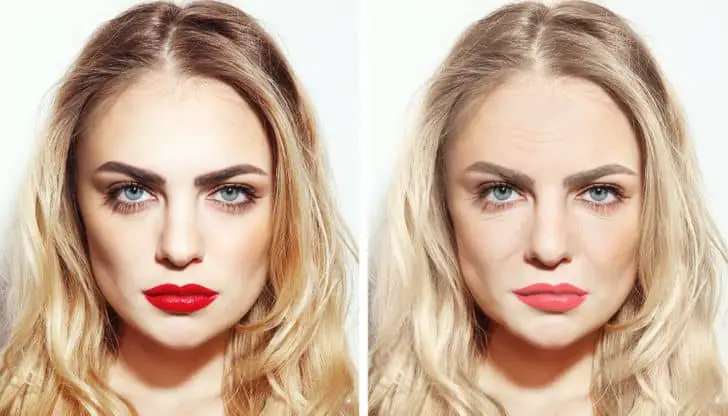
One example of a loss of volume in your facial bones is seen in the above picture. People often experience a reduction in facial height with age, which often accompanies a loss of their tooth/teeth.
Bone resorption can affect our facial structure as we age. For instance, the middle face (upper jaw, nose, and brow bone) experiences a loss of bone volume as people get older.
The loss of bone can also affect the lower jaw. While some people may have a lower jaw that protrudes forward with age, it can also reduce the lower jaw’s angle. That is why older people tend to lose their defined jawlines with age.
However, some parts of your facial structure grow and/or appear bigger as we age. For instance, bony orbits change in shape and grow as we age (Kahn et al., 2008). The chin gets more protruded with age as well.
Other Factors That Make Your Facial Bones Look Like They Are Growing
Some people assume that their facial bones grow with age, but it may only seem like that because of other things happening to your body.
Thinning Skin
Our skin becomes thinner and loses elasticity as we age, which leads to saggy skin and wrinkles. However, the thinning skin may make your bone structure look more prominent, making people assume their facial bones are growing.
Retreating Hairline
As we age, our hairline recedes since our hair gets thinner. A receding hairline makes our forehead larger, causing some people to think that our skull is still growing.
However, a receding hairline creates the illusion that your upper facial bones are growing.
Fat Loss
The loss in facial fat may make you think that your facial bones are growing. We lose our “baby fat” as we get older. Our facial fat slowly goes away as we get older, which often reveals our bone structure.
For instance, a person may have prominent cheekbones and a chiseled jawline when they are 30 years old but had softer, rounder features in their 20s. They had a decrease of facial fat, such as the buccal fat pad in your cheeks, which make their bones look more defined.
Changes in Jaw Shape
People’s jaws widen then drop as they get older. That is because the angle of the jaw changes when people get older. So, your facial bones are not necessarily growing – they are changing.
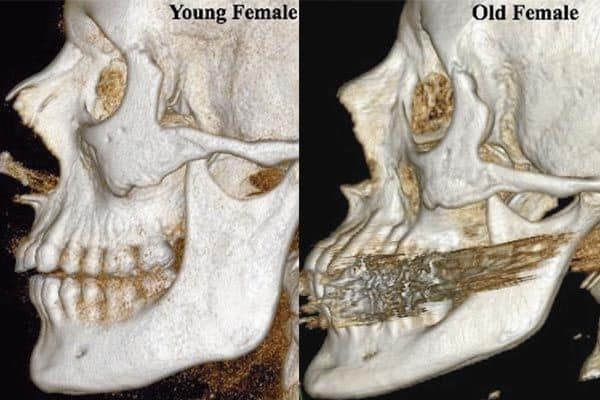
The increased angle of the jaw can make a person’s face look shorter and look less defined. Your jawbone volume also decreases, so your lower face’s soft tissue has less support. It creates a more oval and softer appearance on your lower face.
Since your facial bones will not experience much growth as you age, here is how you can enhance your facial bone structure.
How to Enhance Your Face Shape
Mewing
While your facial bones may not grow when you get older, that does not mean your bones are not malleable. You can use mewing to enhance the structure of your face over the years and decades.
Mewing is a technique that focuses on correcting your tongue’s posture. By adjusting your tongue posture, you will be encouraging your bones to be molded a certain way.
Click here to see our guide for the mewing technique.
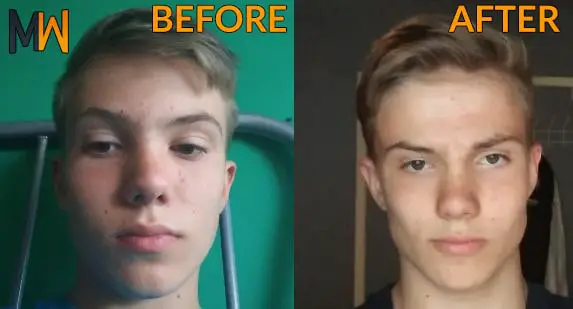
Mewing can help make your cheekbones look more defined and enhance your teeth alignment. Additionally, it can also make your jawline more defined and help improve your facial symmetry.
However, you will not see results overnight. Most people only see results after mewing for six months or a few years. Children will see the best results, teenagers even less, and adults will take years or decades to experience bone remodeling changes.
Dermal Fillers
Dermal fillers are a non-invasive procedure that you can use to enhance your facial features. It is an excellent choice for people who want to add volume but do not want to get surgery.
You can use dermal fillers to add volume to parts of your face like your cheeks, cheekbones, and jaw. It is a gel made out of materials like hyaluronic acid, which is naturally found in your body.
To use dermal fillers, a surgeon injects small amounts of the filler into the desired parts of your face. It is a quick procedure that typically takes less than 1 hour to complete.
Fillers typically last for 12-14 months. However, some people report that theirs last for six months while others say theirs lasts for two years. You can have your fillers dissolved whenever you want, too.
However, the main downsides of fillers are that they can migrate to other parts of your face, they don’t hold their shape well and only look best when initially injected, and you have to keep getting them over and over again, which can add up in cost. Plus, they don’t always get reabsorbed by the body and might linger for years.
Cheekbone and Jaw Procedures
Getting jawline and cheekbone surgery is a quick and permanent way to change your facial bones. People often get implants to get prominent cheekbones and a chiseled, defined jaw shape.
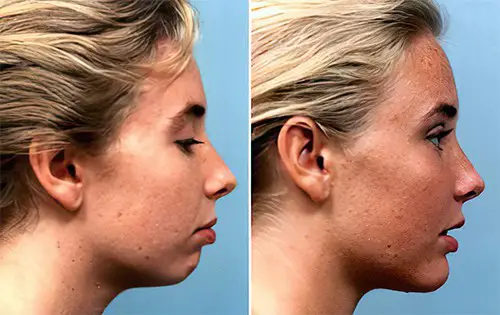
Cheekbone and jaw surgery often takes 1-3 hours to complete. However, it depends on what you want. Jaw and cheekbone surgery is an ideal option for people who want sharper features.
Dermal fillers may be quicker, but the gel is soft and may not give them the definition they want. However, recovery time for cheekbone and jaw surgery is much longer than dermal fillers. You may have to stay in the hospital for a few days to monitor your progress.
You may experience some postoperative symptoms after your surgery for 1-3 weeks. The symptoms can include facial bleeding, swelling, bruising, pain, etc.
While implants are meant to be permanent, you may ask a surgeon to remove them.

